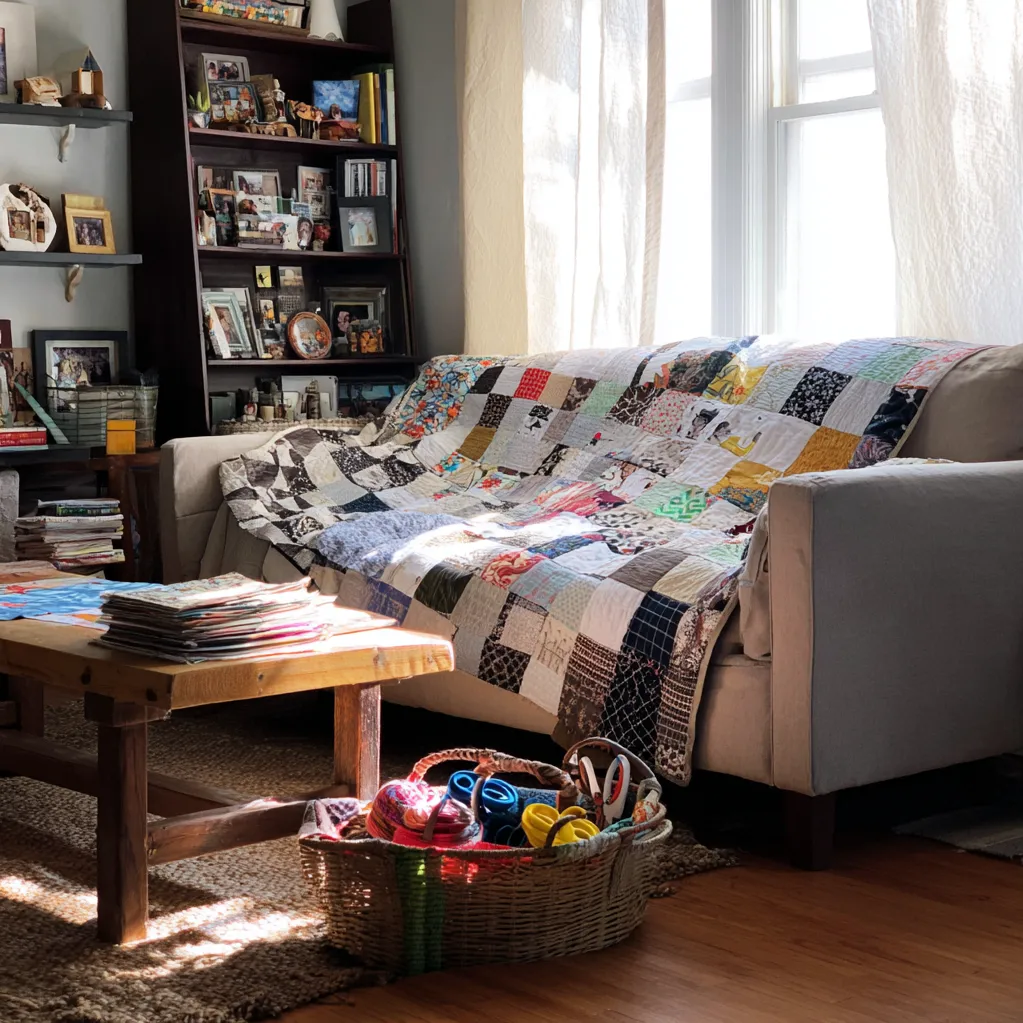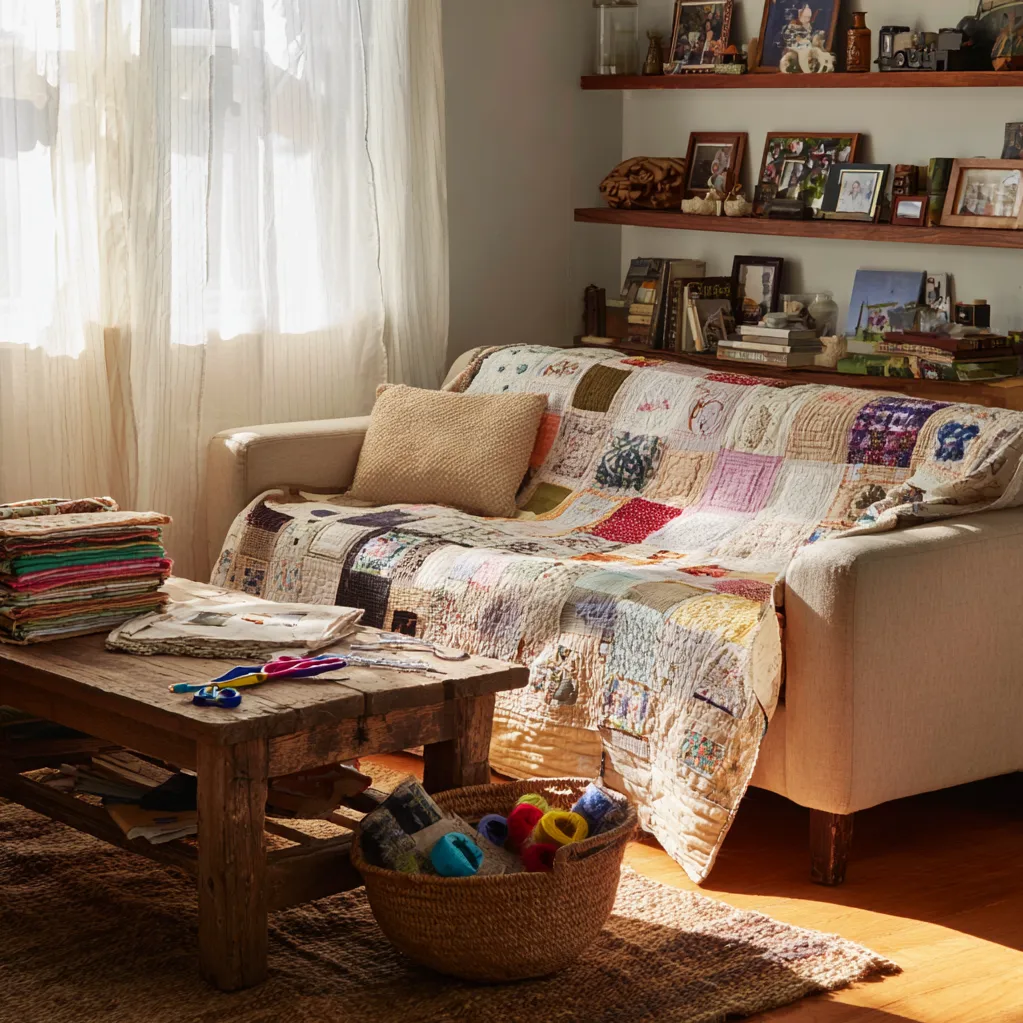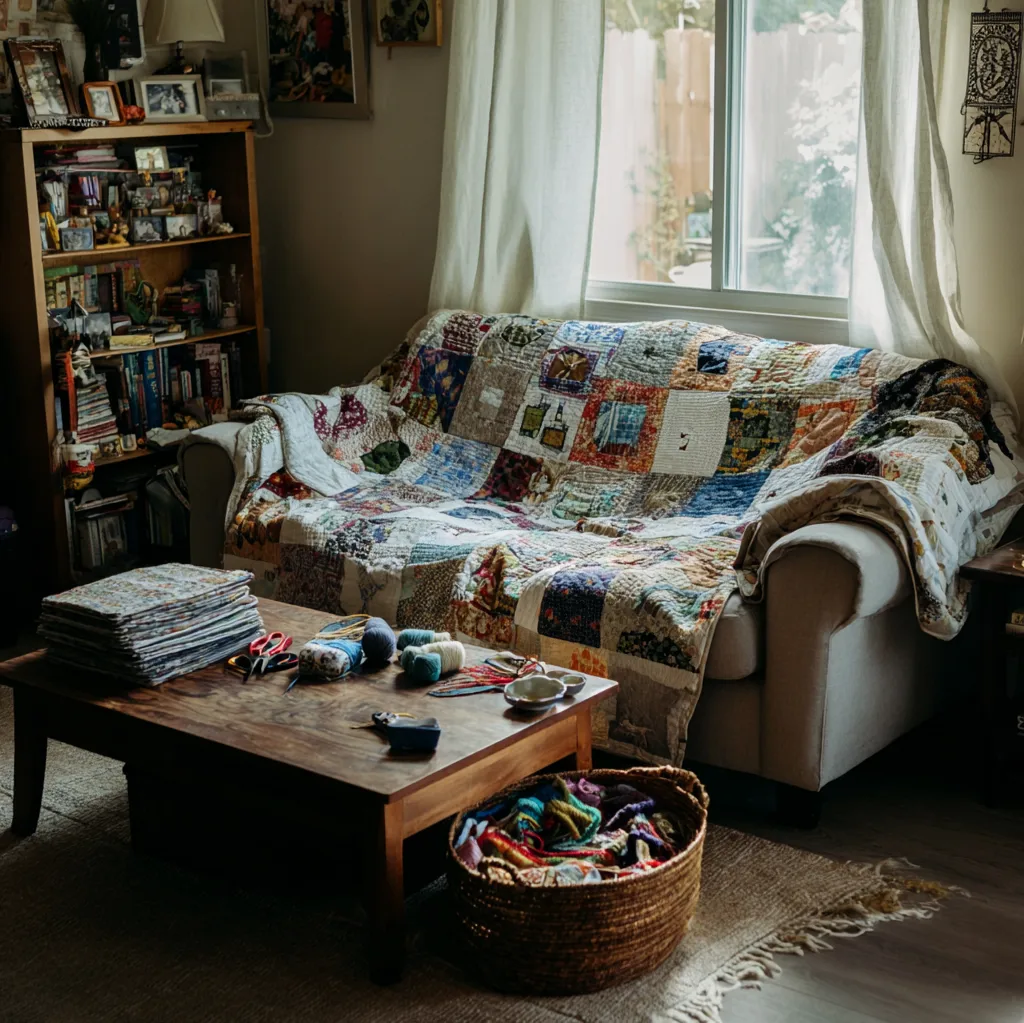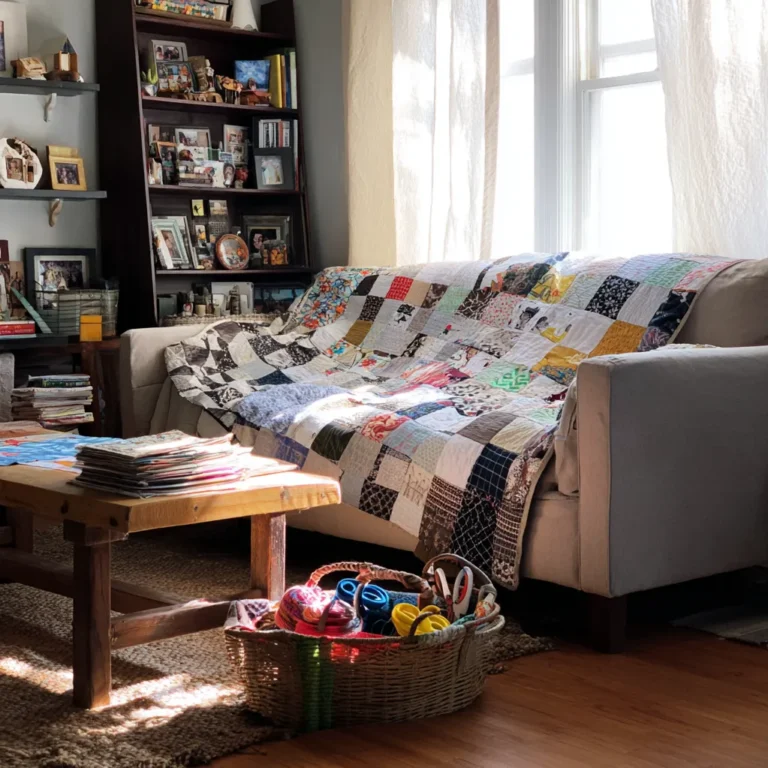
Story quilts are more than just cozy blankets; they’re vibrant tapestries that capture the essence of your life’s most cherished moments. Imagine wrapping yourself in a quilt that tells the tale of your family’s adventures, your travels, or the milestones that define who you are. In today’s fast-paced world, where digital memories often fade, story quilts offer a tangible, heartfelt way to preserve and celebrate your personal history. They transform ordinary spaces into sanctuaries filled with meaning, inviting conversation and connection. Whether you’re a seasoned quilter or a beginner, creating a story quilt allows you to infuse your home decor with personality and warmth. The process itself is therapeutic, blending creativity with reflection, and the result is a functional piece of art that can be passed down through generations. In this article, we’ll explore 12 innovative story quilt ideas that inspire you to turn fabric into narratives, making your living spaces more inviting and emotionally resonant. By the end, you’ll see how these quilts can elevate your home’s aesthetic while honoring the stories that matter most.

Story Quilt Ideas for Family Heritage Projects
Family heritage story quilts are a beautiful way to honor your roots and create a lasting legacy. These quilts can include fabric swatches from old clothing, such as a grandparent's wedding dress or a child's first outfit, weaving together generations in a single, cozy blanket. Start by gathering photos, letters, or mementos that represent key family events, like reunions or holidays. For example, you might use a map fabric to symbolize your family's migration or embroider names and dates to mark births and anniversaries. One popular approach is to create a block for each family member, using colors and patterns that reflect their personalities. Incorporate techniques like appliqué to add detailed elements, such as a family crest or favorite quotes. According to experts at The Spruce Crafts, using contrasting fabrics helps highlight these personal touches, making the quilt visually engaging. This project not only results in a functional piece but also strengthens family bonds as you work together. Aim for a balanced design that tells a cohesive story, perhaps organizing blocks chronologically or thematically. With 12 ideas in mind, you could dedicate sections to different branches of your family, ensuring every detail contributes to the overall narrative. Such quilts often become heirlooms, cherished for their emotional depth and craftsmanship.

Story Quilt Ideas Inspired by Travel Adventures
Travel-inspired story quilts capture the excitement and memories of your journeys, turning souvenirs into a functional work of art. Begin by selecting fabrics that evoke the places you've visited—think batik prints for tropical destinations or wool blends for mountain escapes. You can incorporate actual items like patches from national parks, ticket stubs sealed in clear vinyl pockets, or even small pebbles sewn into pockets for texture. A great idea is to design the quilt as a map, with each block representing a different location or experience. For instance, use blues and greens for coastal trips or earthy tones for desert adventures. Embroider coordinates or dates to mark significant stops, and add symbols like airplanes or cars to illustrate your mode of travel. As noted by travel bloggers, this approach makes the quilt interactive, sparking stories every time it's used. To keep it practical, ensure the materials are durable and easy to clean, especially if it will be used on picnics or camping trips. With our 12 creative concepts, you might include a section for each continent or focus on a single transformative trip. The key is to balance aesthetics with storytelling, so the quilt feels both beautiful and meaningful. This not only decorates your home but also serves as a daily reminder of the world's wonders.
Story Quilt Ideas for Seasonal and Holiday Themes
Seasonal and holiday story quilts bring the magic of celebrations into your home all year round, capturing the joy of events like Christmas, Halloween, or summer festivals. These quilts can feature fabrics with seasonal motifs—such as snowflakes for winter or florals for spring—and incorporate elements like ribbon for gift-like touches or sequins for festive sparkle. Start by planning a design that cycles through the year, perhaps with blocks dedicated to each season or specific holidays. For example, a Halloween block might include orange and black fabrics with bat appliqués, while a Christmas section could have red and green patches adorned with embroidered trees. Including personal memories, like photos transferred to fabric from a family vacation or a child's drawing from a holiday, adds a unique touch. Experts in DIY decor suggest using fusible web for easy appliqué to handle intricate designs without fraying. With 12 ideas to choose from, you could create a quilt that changes with the seasons, encouraging you to display it in different rooms. This not only enhances your decor but also fosters traditions, as the quilt becomes part of your holiday rituals. Ensure the quilt is cozy and machine-washable for practical use during gatherings, making it a centerpiece for family moments.

Story Quilt Ideas Using Upcycled Materials for Sustainability
Upcycled story quilts are an eco-friendly way to tell your tale while reducing waste, turning old clothes, linens, or fabric scraps into something new and meaningful. Begin by collecting items with sentimental value, such as t-shirts from concerts, jeans from memorable outings, or bedsheets from a first home. Cut them into uniform squares or irregular shapes for a patchwork effect, and mix textures like denim, cotton, and flannel for visual interest. This approach not only saves money but also gives each piece a backstory—imagine a quilt made from a child's outgrown outfits, preserving their growth in a cozy blanket. Techniques like sashiko stitching can reinforce seams and add decorative patterns, while natural dyes from plants can color fabrics for a rustic look. According to sustainable living advocates, upcycling reduces environmental impact and encourages creativity. With our 12 innovative ideas, you might focus on themes like 'a year in clothes' or 'memories in fabric,' ensuring each section tells a part of your journey. For instance, pair old band t-shirts with photos printed on fabric to commemorate music milestones. This makes the quilt not just a decor piece but a statement on mindful consumption. Always pre-wash materials to avoid shrinkage and use a sturdy backing for longevity, so your story quilt lasts for years to come.
Conclusion
In wrapping up, story quilts are a powerful medium for transforming personal narratives into beautiful, functional home decor. Throughout this article, we've explored 12 inspiring ideas, from family heritage projects to travel-themed quilts, seasonal celebrations, and sustainable upcycled creations. Each approach offers a unique way to weave memories into fabric, turning ordinary blankets into treasured heirlooms that spark conversation and comfort. By incorporating techniques like appliqué, embroidery, and photo transfers, you can customize your quilt to reflect your life's journey, making your living spaces more inviting and emotionally rich. As you embark on your own story quilt project, remember that the process is as rewarding as the result—it encourages reflection, creativity, and connection with loved ones. Looking ahead, consider how these quilts can evolve with new technologies, such as digital printing for sharper images or smart fabrics that interact with apps. For more inspiration on DIY home projects, check out our guide on https://wheelsoflavor.com/diy-decor-tips. Start small, perhaps with a pillow cover or wall hanging, and let your stories unfold stitch by stitch. Embrace this art form to not only decorate your home but also preserve the moments that define you, ensuring they're passed down for generations to enjoy.
Frequently Asked Questions
Q: What materials do I need to start a story quilt project?
To begin a story quilt, you'll need basic quilting supplies like fabric (cotton is ideal for beginners), a sewing machine or needle and thread, scissors, a rotary cutter, cutting mat, and quilting ruler. Additionally, gather personal items such as old clothes, photos printed on fabric paper, or mementos to incorporate. For the backing, use a sturdy material like flannel or cotton batting, and consider fusible web for appliqué. It's helpful to have a design plan or sketch to guide your layout. Start with a simple pattern if you're new to quilting, and remember to pre-wash fabrics to prevent shrinkage.
Q: How can I preserve photos in a story quilt without damaging them?
To preserve photos in a story quilt, use fabric photo transfer paper, which allows you to print images directly onto fabric using an inkjet printer. After transferring, seal the image with a fabric sealant or by ironing it with a pressing cloth to set the ink. Alternatively, you can embroider around photos or place them in clear vinyl pockets sewn into the quilt to protect them from wear and washing. Avoid using original prints; instead, make copies to prevent loss. For long-term durability, limit washing and use gentle cycles, as recommended by conservation experts.
Q: Can beginners create story quilts, and what are some easy ideas to try?
Absolutely, beginners can create story quilts by starting with simple projects like a patchwork quilt using pre-cut fabric squares or a no-sew tied quilt. Easy ideas include a memory quilt from t-shirts, which involves cutting squares and sewing them together, or a photo quilt with transferred images on plain fabric. Focus on basic stitches and straightforward patterns, such as a grid layout, to build confidence. Online tutorials and community classes can provide guidance, and practicing on small items like pillow covers first helps. Remember, the goal is to tell your story, so even imperfect quilts hold great sentimental value and can be a fun, rewarding DIY project.

